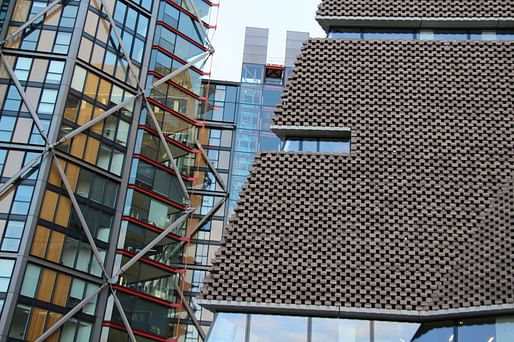

The Tate Modern in London has announced its compliance with the UK High Court’s February ruling regarding a privacy case that involved its 10th-floor viewing gallery and five residents of the adjacent Neo Bankside apartments.
The museum will now restrict visitors' access to the platform, which was constructed in 2016 as part of a Herzog & de Meuron-led $318 million Blavatnik Building expansion. The remedy will help the Tate avoid paying any monetary damages, as was the will of the plaintiffs. Their decision puts an end to a saga that has touched on Inner London’s class conflicts over housing and could potentially carry future ramifications in regards to design and the public realm, according to Guardian critic Oliver Wainwright and other observers.
Natasha Rees, a senior partner at the law firm Forsters, which represented the five Neo Bankside residents, said: “An award of damages was never our clients’ aim and they are grateful for the Tate’s recent willingness, instead, to agree that the viewing platform will not be operated in a way which causes nuisance. They are pleased that this long-running dispute has been concluded.”
The lawsuit was first initiated in a lower court in 2017 and then rejected before petitioners eventually had their case heard before High Court justice Sir Anthony Mann, who ruled in their favor. The Neo Bankside apartments were completed by Rogers Stirk Harbour + Partners in 2012 and have since ignited a separate debate over the developer's suspect lack of inclusion of affordable units, which some have said sets a “hugely damaging precedent” in the midst of a housing crisis that's affecting most of London and the greater UK.
Are you sure you want to block this user and hide all related comments throughout the site?
1 Comment
Glad that the problem was solved, if that is the right word. At the very least it was concluded. Can't help but wonder at the right to not be looked at as a defence for development in the future, especially when the location of the housing was built on the presence (and inherent value) of all the stuff around it.
Kind of like the rumors of celebrities who ask that people don't look them in the eye. Except this time it is not just a request, it's enforced.
Back in the aughts when I was working on housing in London we were required to put louvers on some of the windows to ensure residents could only look up and never down at their neighbors. Coming from Tokyo it seemed mildly absurd at the time. Can't say my opinion has changed much in the meantime. How far away can a person be and not have a right to look outside their own building for fear of seeing someone or something?
Not for nothing, this rule would completely negate the possibility of a Rear Window remake.
Archinect
This is your first comment on Archinect. Your comment will be visible once approved.